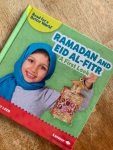
Read for a Better World: Ramadan and Eid Al-Fitr: A First Look by Percy Leed

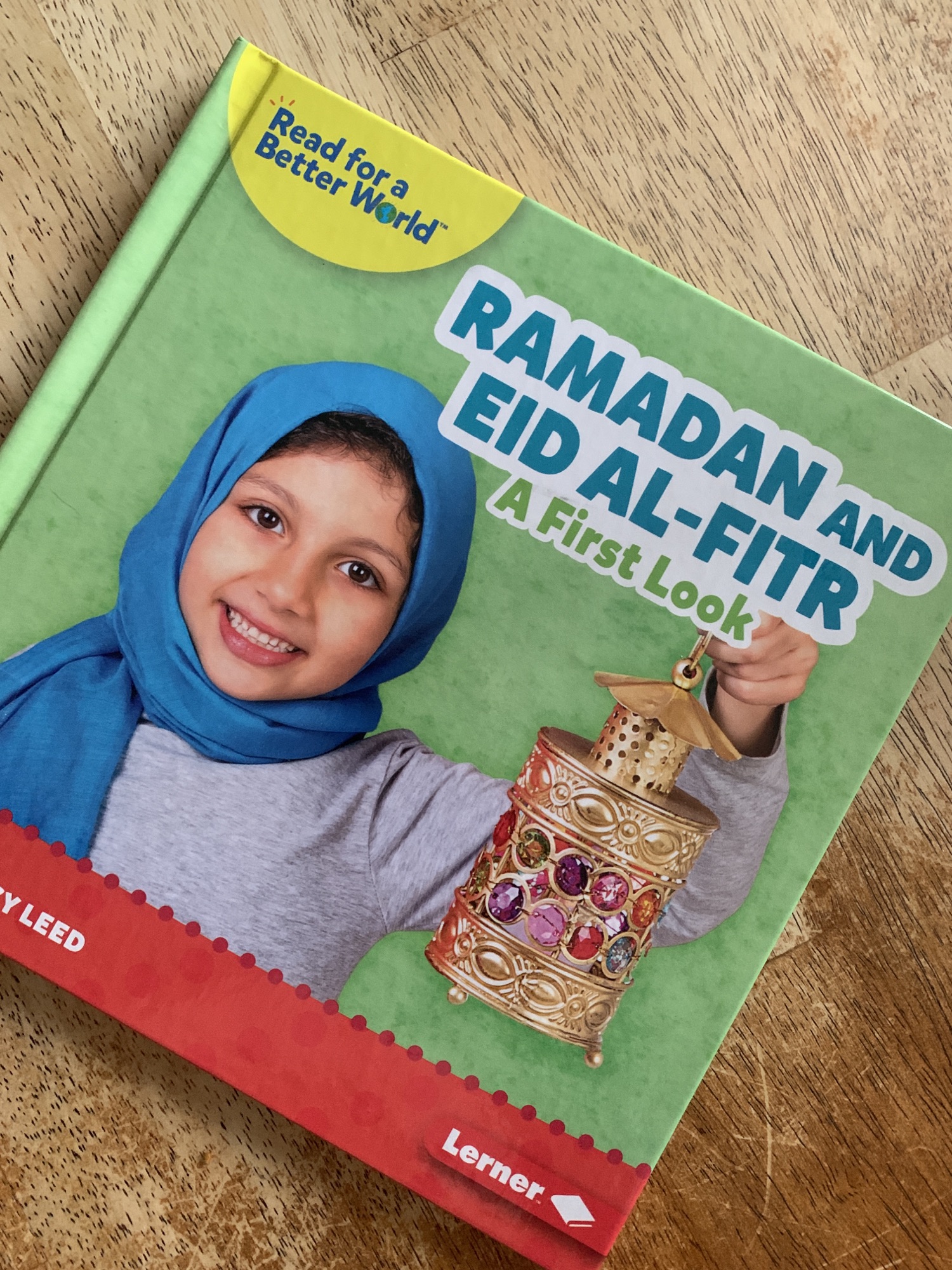
I honestly don’t know who this 24 page book is for and to what purpose it would be read. It is non fiction, it is listed for 5-7 year olds. But the sparse text feels toddler-ish, and it is so simplified, that it doesn’t teach, educate, or inform anyone about Muslims or Ramadan, it does an ok job at showing Eid though, for the age level, I will admit that. I know I struggle with non-fiction, it is a me problem, and I know children can handle more than we credit them for, think dinosaur and construction vehicles, but if the person reading this book with the child knows nothing to add, this book really doesn’t give even the most well-meaning adult, guardian or second grade teacher, much of anything to work with. They would do better with a fiction book and Google. Sigh.
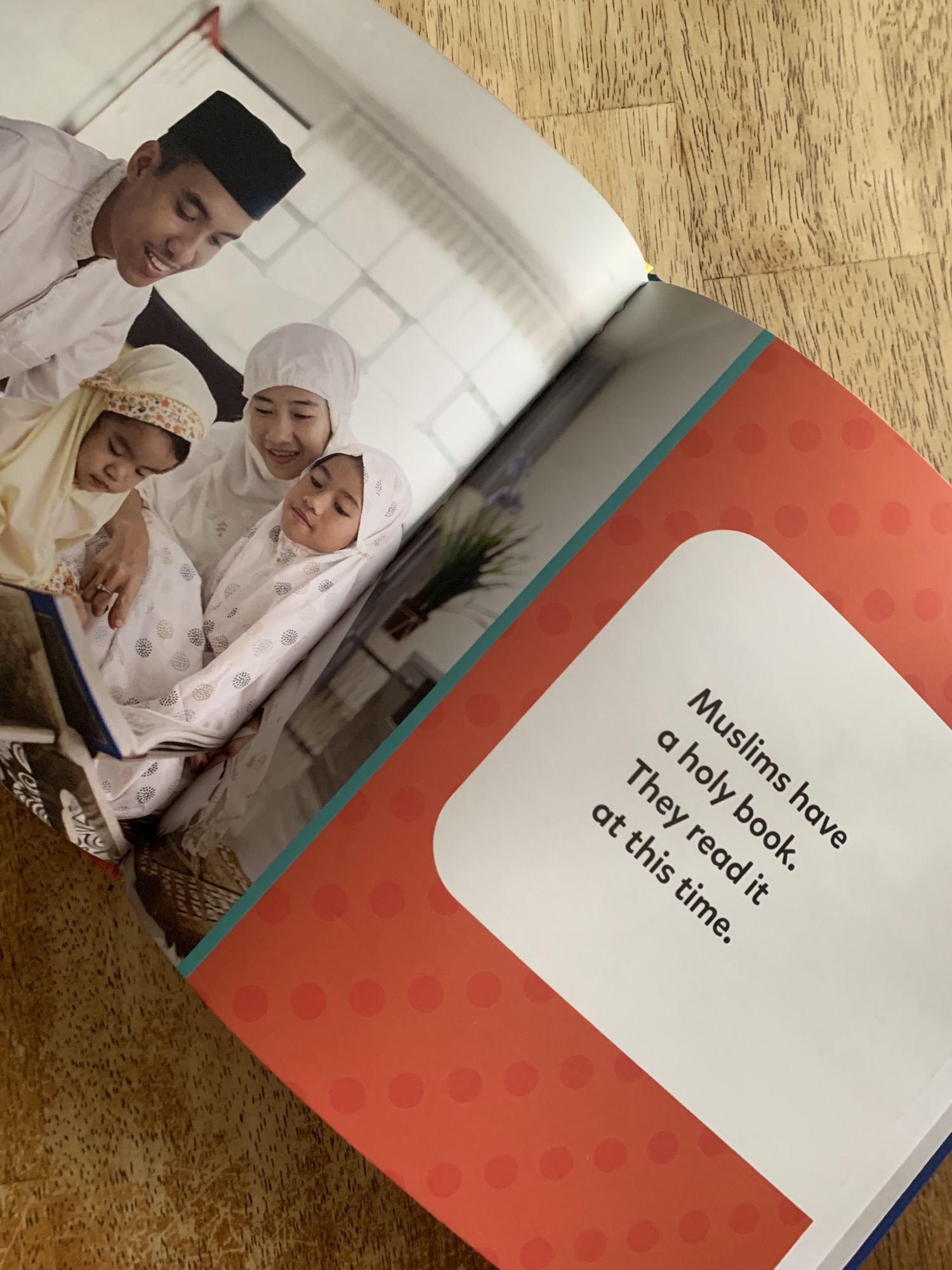
The book starts out with an Educators Toolbox before beginning, it encourages guidance to ask what children think the book will be about, asks them what they already know, and what they would like to learn. It then encourages sounding out words, looking at pictures for clues, and praising the child.

The first page of text has the headline of Ramadan and Eid al-Fitr with the line, “Ramadan last for one month,” immediately below, already kind of confusing an early reader, why Eid was mentioned and then not discussed. The next page says “Muslims have a holy book. They read it at this time.” Yes, we do, but we read it at all other times, too. The sparse words give extra weight to the words chosen, and in this case, it makes an erroneous assertion.
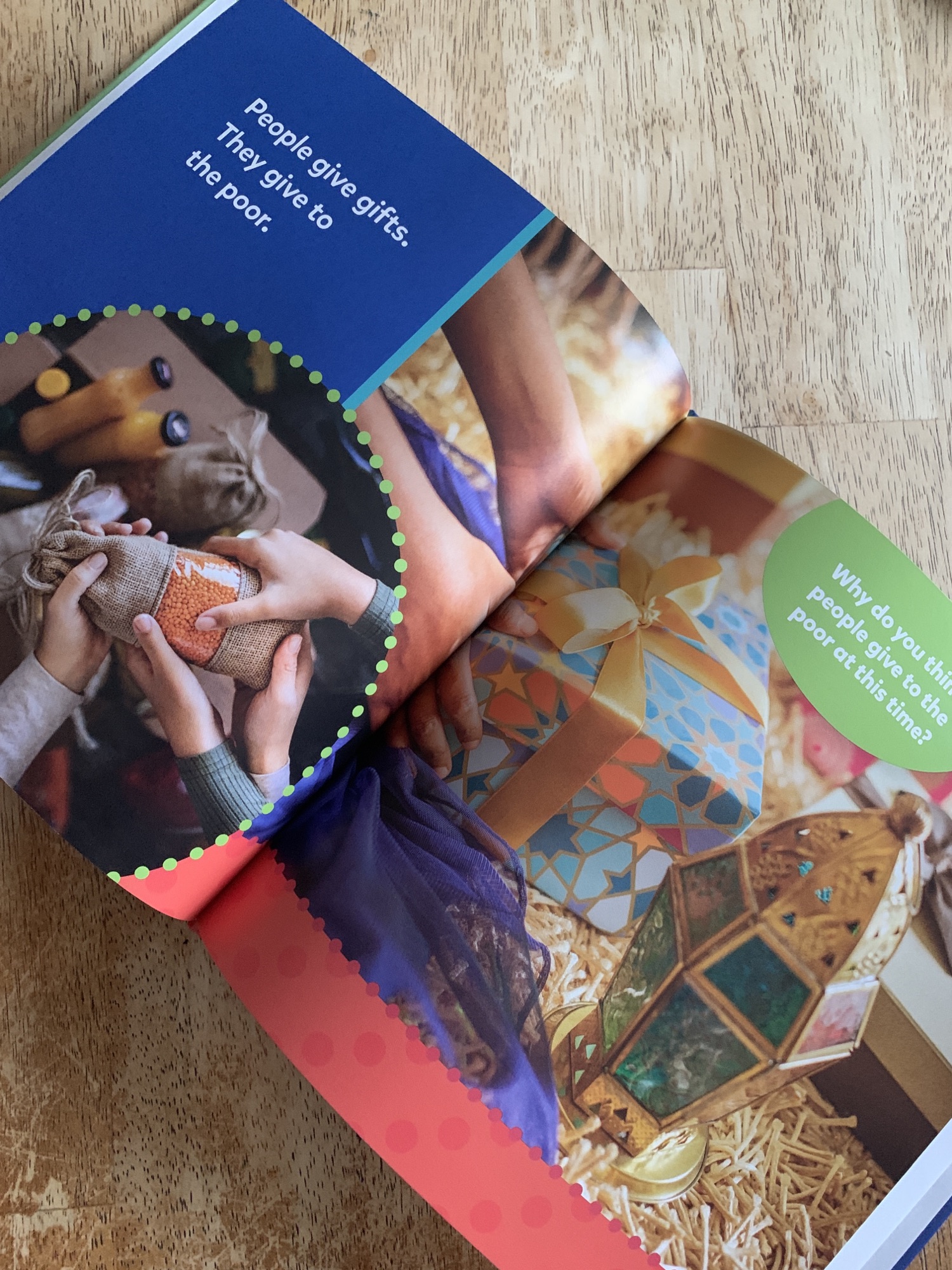
I wish it said Muslims pray five times a day instead of “People pray five times a day,” same with when it says that People fast. It does get it correct that we fast from dawn to sunset, so I do appreciate that.
It then moves to Eid al Fitr and does a decent job highlighting that people dress up, pray together, give gifts and give to the poor, which is clear and accurate. Again I wish it said Muslims dress up, pray together, etc. since the word Muslim is only mentioned once in the book, Islam not at all, I don’t know that the connection will be made.
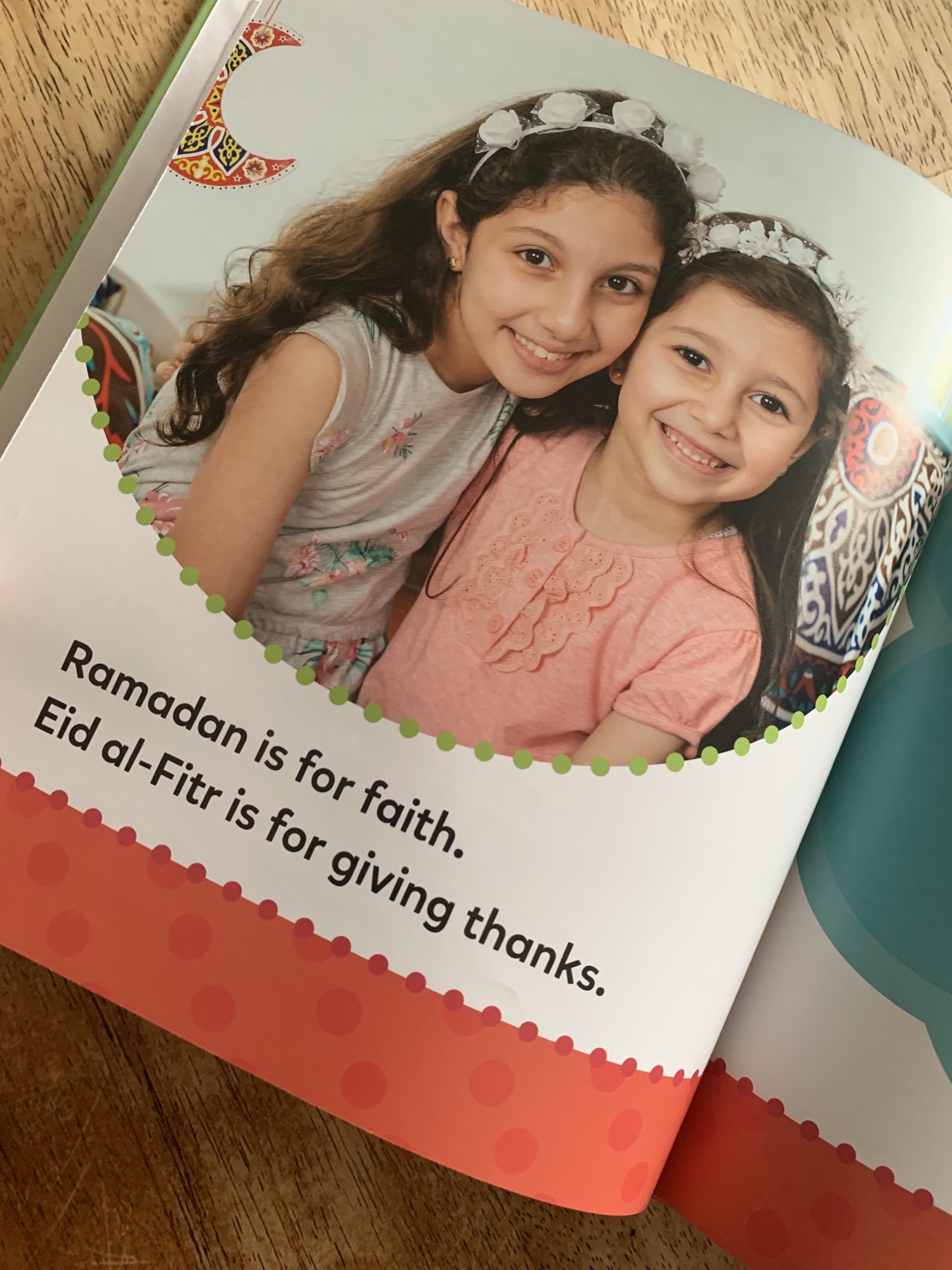
The last page I don’t even know what it means, “Ramadan is for faith. Eid al-Fitr is for giving thanks.” Faith and thanks are intrinsic to both Ramadan and Eid, so I can’t make sense of the statement.
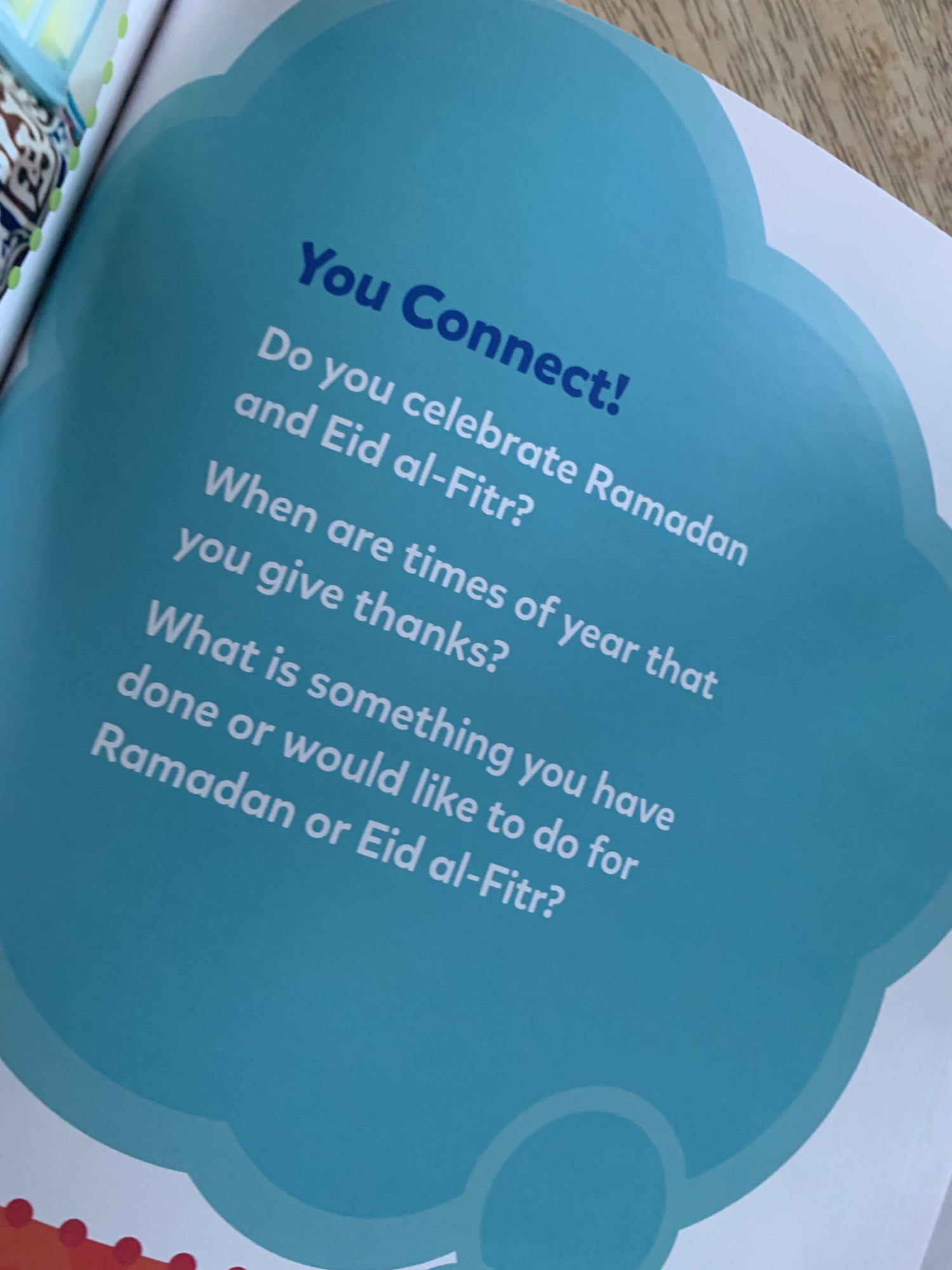
The book then has some connection questions, Social and Emotional Snapshot, Photo Glossary, and a Learn More section. It seems like it is part of a series that ticks checkboxes for inclusion in well funded school and public libraries. I don’t know where this book would be sought after, useful, or informative unfortunately.



